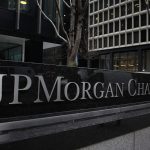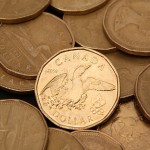Copper made a deep plunge on Thursday on U.S. and China news. Ben Bernanke announced on Wednesday Feds monetary stimulus will probably be tapered within the second half of the year and Chinas preliminary HSBC PMI hit its lowest level since September.
On the Comex division of the New York Mercantile Exchange, copper futures for July delivery lost 1,94% for the day at 8:52 GMT. The industrial traded at $3.080 a pound, nearing a two-month low earlier in the session. Copper ranged between days high and low at $3.141 and $3.070 a pound respectively.
Ben Bernanke announced yesterday that the central bank won’t scale down its monetary easing program just yet, but that is highly possible to happen within the end of the year, provided the needed stable recovery signs. According to Bernanke, Fed’s moves are tied to what happens in the economy and the central bank has no fixed plan, sentiment points at reducing bond purchases. Bernanke said that if the economy continues to improve in line with Fed’s projections, it would be “appropriate to moderate the monthly pace of purchases later this year”, and end the program as the unemployment rate drops do 7%, which Fed expects to happen around mid-2014.
This caused the dollar to surge, extending gains versus all its major counterparts. The dollar index, which tracks the greenbacks performance against its major peers, rose by nearly 0.8% for the day, pushing dollar-priced commodities down. A stronger dollar decreases the appeal of raw materials as an alternative investment and makes them more expensive for foreign currency holders.
China manufacturing outlook
Meanwhile, coppers demand outlook was trimmed as Chinas preliminary reading of the HSBC Purchasing Managers Index, which was released today, showed the Asian countrys manufacturing shrank with a faster pace this month. The flash reading of 48.3, which, if confirmed, will be the lowest since September, mismatched the 49.1 forecast by a Bloomberg News survey and is worse than Mays final value of 49.2.
This comes after The World Bank reduced its forecast for the nation’s economic growth to 7.7%, down from 8.4%. Earlier, during the last week of May, the IMF cut its economy growth forecast for China to 7.75%, down from 8%. Record credit in the first four months of the year failed to spur growth and premier Li Keqiang said last night the financial system needs to do a better job of supporting the economy. The government is expected to boost credit support for strategic industries and those that are labor-intensive.
Xu Gao, chief economist with Everbright Securities Co. in Beijing. said for Bloomberg: “If market rates remain at such high levels, the only scenario for the Chinese economy is a hard landing. That possibility is growing now – it seems the leadership is deliberately taking a wait-and-see stance to see how low China growth can be.”
Qu Hongbin, HSBC’s Hong Kong-based chief China economist commented as well: “Beijing prefers to use reforms rather than stimulus to sustain growth. While reforms can boost long-term growth prospects, they will have a limited impact in the short term. As such we expect slightly weaker growth this quarter.”




